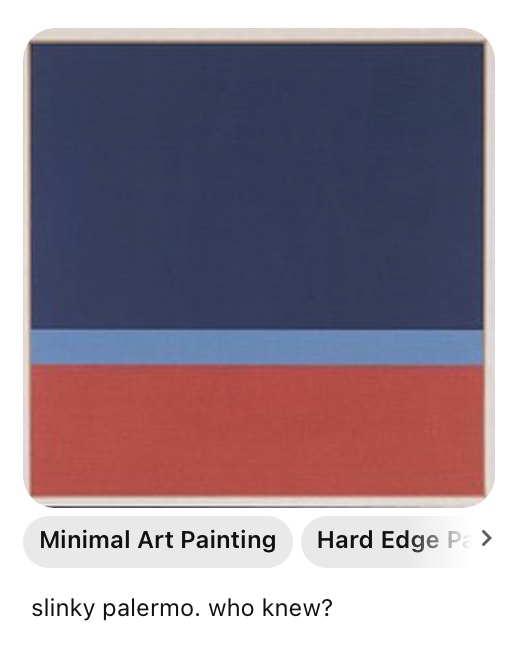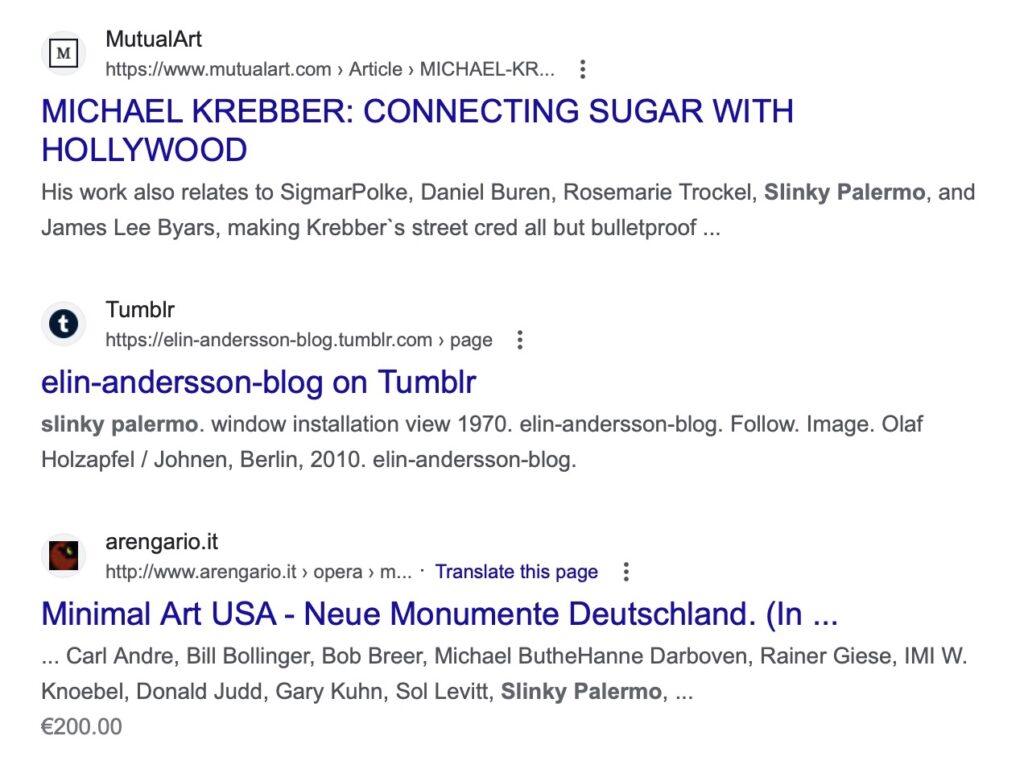I scanned over my neighbors.
Slinky Palermo, Slinky Palermo
Now I’m in all the papers.

So far we have only two images of artworks attributed to Slinky Palermo, from Pinterest [above] and tumblr [below]. I guess technically, it’s slinky palermo.

Though namechecked by famous critics in prominent places, and included with major historic figures in a publication for a group show,

the most significant critical information we have on the artistic practice of Slinky Palermo comes from just two sources.
The first is the Dia Art Foundation, which exhibited Slinky Palermo works from 1964-1997 in 2011, as seen in the results for two slightly differently worded Google searches:


It may be possible that additional Google searching will yield more detail from these truncated excerpts, in the way that you can, in desperation, search phrase by incremental phrase in a Google book snippet view.
The other is a New York Magazine directory listing for a 1995 exhibition at Brooke Alexander:

Whatever it may have been in the past, from this point forward, Slinky Palermo is an artist who sees abstraction as a Google search into the philosophy of epistemology.
Given the absence of actual books in the Google Books results, it seems likely that most Slinky Palermo mentions can be attributed to OCR software that predates Google’s own scanning initiative. Whether it’s a steadfast commitment painting in the face of untenable something, or glitching industrial-scale digitization, Slinky Palermo is a tenacious artifact—a bookmark, if not a flagbearer—of a specific historic moment and context, and for those that inhabit and revisit it. Which, looking prospectively, is all of us.
